Picture Stockton... surveying the New Jersey coast
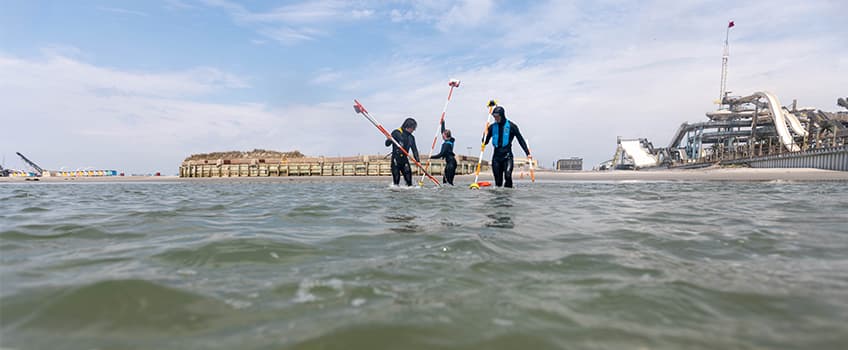
North Wildwood, N.J. - The Stockton University Coastal Research Center (CRC) offers a job for students that takes them to 171 New Jersey beaches to swim, and they're hiring. Wetsuits and fins are provided.
Student workers dive in to help survey the state's coastline and collect data that determines the future of New Jersey's beaches.
Kimberly McKenna, interim executive director of the CRC, started as a student worker in 1984, two years before the New Jersey Beach Profile Network (NJBPN) was established to monitor the state's shoreline conditions. She has witnessed four decades of coastal processes and continues to document the evolving shoreline with the help of students and staff.
"(Initially), it was me, Stew (Farrell, the former director of the CRC) and Gus (Stew's dog). Back then we used the Emery method for beach profiling," she recalled.
Wetsuits have gotten warmer, technology has advanced and the number of beaches surveyed has grown to 171.
Working as a coastal geologist has shown McKenna that "the impact of federal, state and local beach nourishment, which started in the late 1980s, has helped."
Dramatic changes followed Sandy -- first destroying dunes and then rebuilding them.
"After Sandy, the Army Corps of Engineers received funding from Congress. Beach profiles changed with that added sand. We had substantial dunes, engineered to protect some sections of the coast, for the first time," she said.
The New Jersey Department of Environmental Protection funds the NJBPN survey work, and the CRC publishes annual reports documenting seasonal and multiyear changes in shoreline position and sand volume.
Beyond the beach, the CRC team works on projects along the bayshore to restore habitat, is analyzing the use of dredged material for restoring saltmarshes and is studying the causes of nuisance flooding.
Below is a photo story documenting a day at the beach with the Coastal Research Center. The team was hired by North Wildwood to conduct the survey work pictured.
Photos and story by Susan Allen
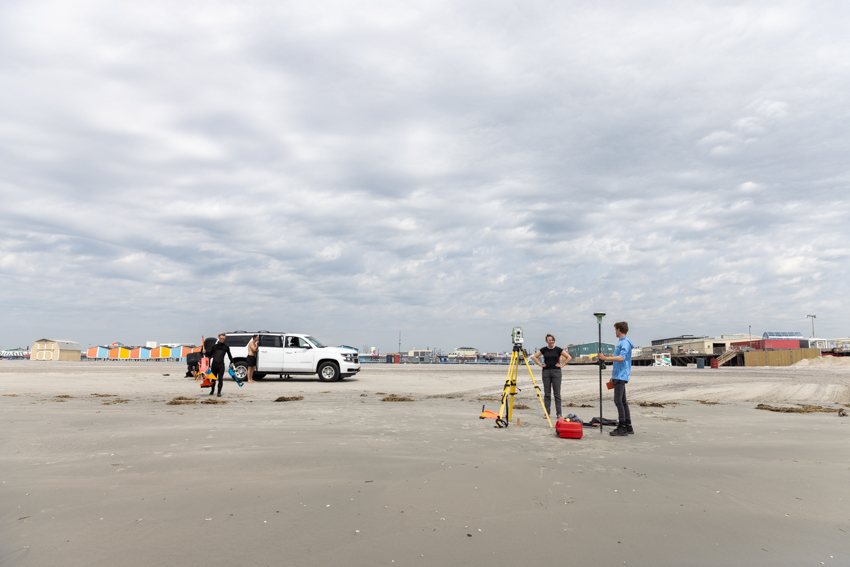
The CRC team arrives at East Poplar beach in North Wildwood, which is one of the proactive shore communities that hires the CRC for additional, closer-spaced profile sites that are surveyed four times a year. More detailed data provides coastal zone managers with more information to manage their beaches and dunes.
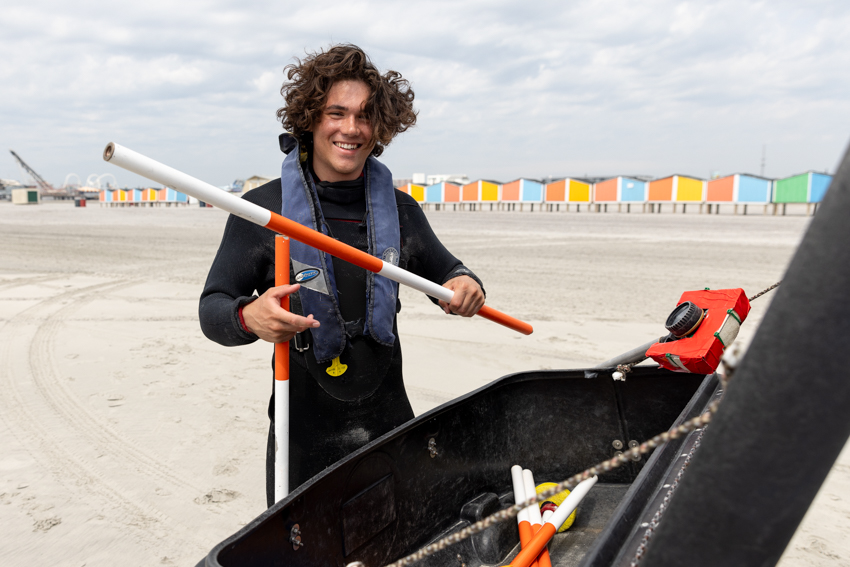
Bodhi Fox, who leaves for graduate school in June, unpacks a range pole. He will swim out with an optical prism mounted to the range pole to a depth of 15 feet. Positions are recorded at critical features in the topography or at least every 25 feet from the back dune to mean low water. The prism pole height can be changed between data points as necessary. A beach profile typically consists of 35 to 55 individual data points.
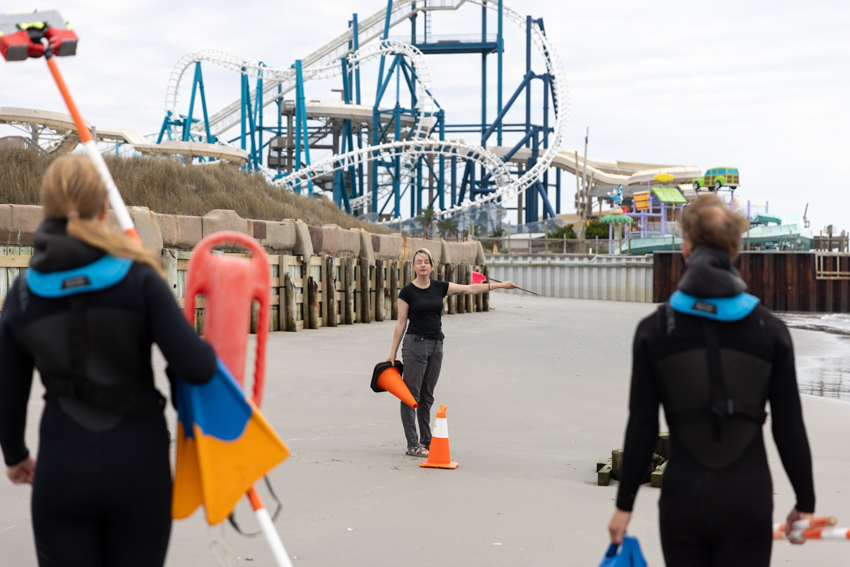
Holly Pimpinelli, coordinator of field operations, sets up cones along the survey line and strategizes a plan with the swimmers before they dive in.
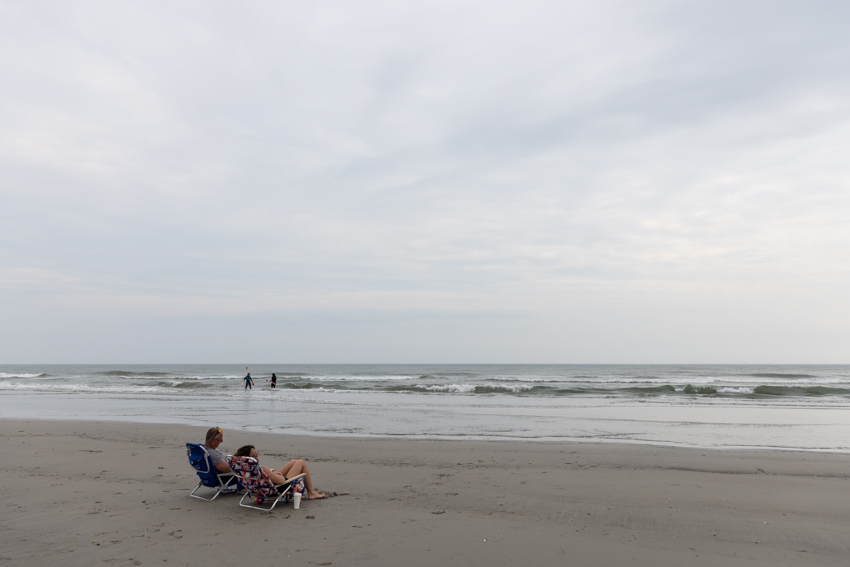
NJBPN survey work ends before summer is in full swing, so the beaches are mostly quiet.
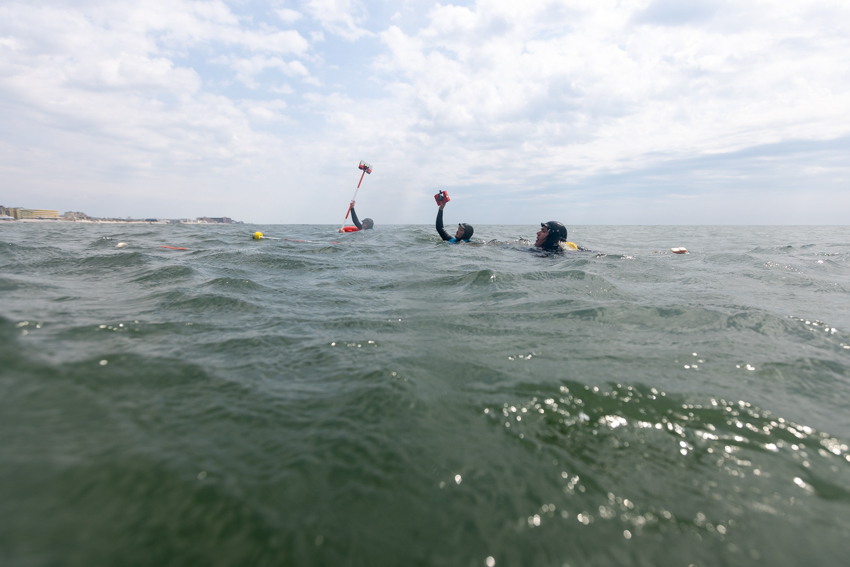
From left, Kayleigh Henry, Mason Sherman and Bodhi Fox tread water. They reach the prism high enough to be seen by the laser on the Total Station unit that is mounted on a tripod on the beach.
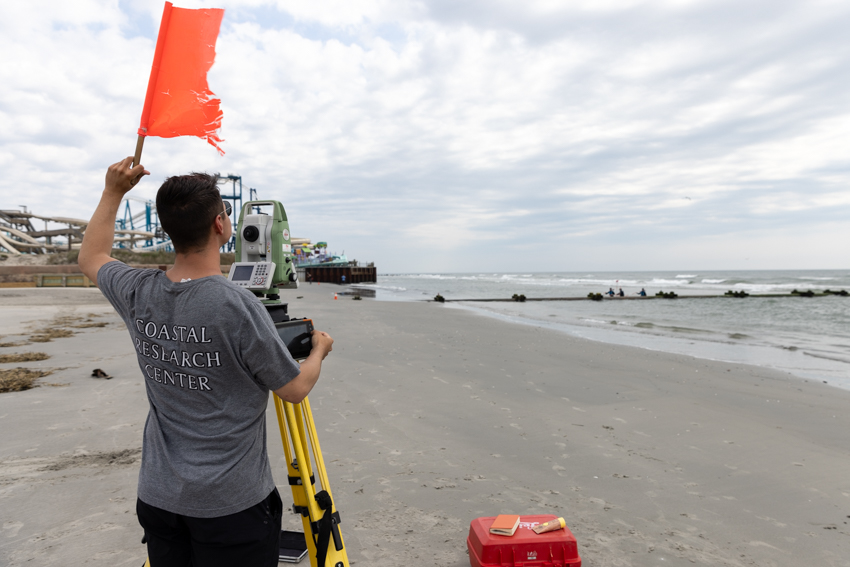
Evan D'Ambrosio, an environmental field specialist and data analyst, waves to the swimmers with a bright orange flag to signal that the Total Station has recorded their position.
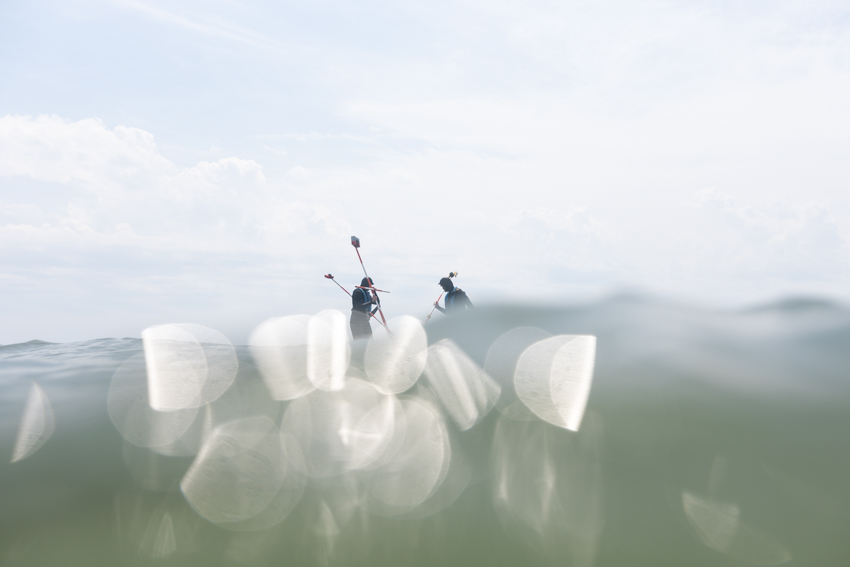
Swimmers switch from kicking to walking as they reach a sandbar off the beach.
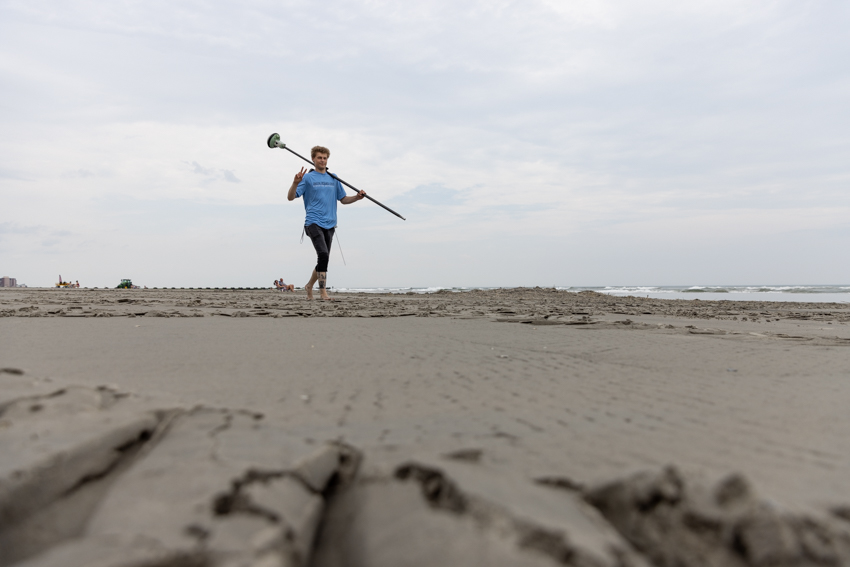
Andrew Kazlauskas, pictured with a GPS unit, got his scuba certification during the pandemic and worked as a lifeguard for Wharton State Forest. When he transferred to Stockton, he applied for a position at the CRC, which he describes as "another step in the right direction for me. Collecting this data helps nourish and manage our beaches. Having a love for the ocean, I naturally stuck with it. We work from Cape May all the way up to Raritan Bay, so you get to see all the beaches." He has witnessed both the power of the ocean and the beauty of the creatures that call it home. "I’ve seen crazy scarping — a flat cut of sand -- up to 20 and 30 feet from storm damages. Entire pathways can be gone. That’s Mother Nature. I’ve swam with dolphins and seals, but the craziest thing for me was off of Avalon. A mother and a baby humpback whale breached 20 feet from us. I was taking a point and mid-way through that point, the baby breached right next to us. When we swam in, Evan was like, 'Did you just see that!'"
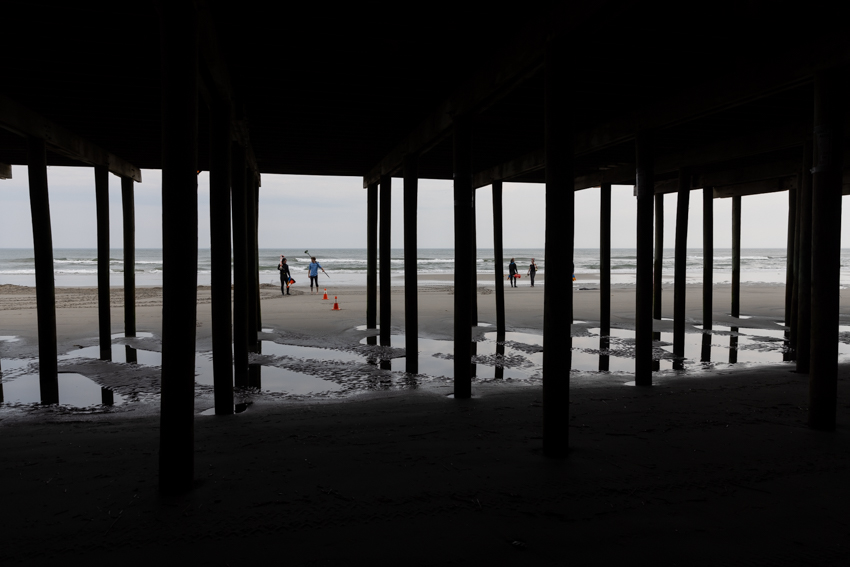
Kayleigh Henry, a senior Environmental Science major, got an email from her professor about a CRC job opportunity. “I’m not really sure what I want to do with my career path, so I thought getting somewhere within Marine Science would help guide the way. During the interview, I thought it sounded really cool. Who gets to swim at the beach every day for a job? I thought I would try it out," she said. An American oystercatcher flew by calling, and the sun peeked out from the clouds. "You are rewarding your body and your mind because you are learning so much," she added. She admitted swimming isn't always easy. "Sometimes you get out in the ocean and fall to your knees. It’s so embarrassing, but you get right back up and keep going. You have to walk backward in swim fins," she said.
For more images, view the Flickr album.


